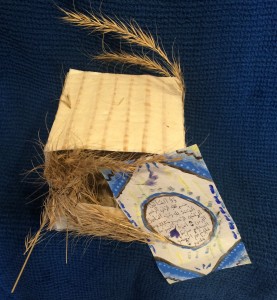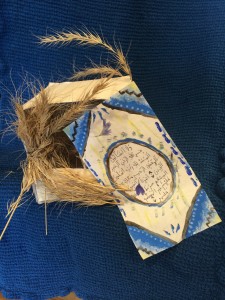Stuck behind the Maize
“However, if there has remained to him any clear distinct memory of this time about which there is no cause to doubt, it is the memory of a fence, which stood in front of him and was made of maize stems and which was only a few paces away from the door of the house.
He remembers the fence as though he saw it only yesterday. He remembers that the stalks of which this fence was composed were taller than he was, and it was difficult for him to get to the other side of it.
He also recalls that the stalks of this fence were close together, as it were stuck together, so that he could not squeeze between them. He recollects too that the stalks of this fence stretched from his left to an ending he could not conjecture; and it stretched from his right to the end of the world in that direction….”
The opening scene of An Egyptian Childhood may seem, at first, to be mostly unrelated to the rest of the story, simply dropping in a few details about location and then moving on. However, the author’s memories set up the themes and ideas of most of the remainder of the work. An Egyptian Childhood tells the story of a young blind boy who grows up in Egypt, and focuses especially the time he spends learning to memorize and understand the Quran. This opening scene, while not mentioning the Quran, does explain the background of the author’s circumstances and the sources of the author’s happiness. The fence of maize is described as going on forever in either direction, simultaneously providing him with a clear path to follow (which he does, going on adventurous walks to the canals to both the right and the left) and keeping him enclosed, unable to push his way through the maize like the bunnies he so admires. The fence of maize also reflects the limit that his eyesight imposes on him. You will notice that he begins his trip down memory lane not with a visual descriptive, but by guessing the time of day based on the amount of warmth and breeze he felt on his face. This then leads into his experience of the maize field, which very tactile.
This scene, as well as how it relates to the rest of the story is what I decided to depict in my art reflection for this week. I began by making a box out of maize-like plants. I couldn’t make it infinite in all directions for obvious reasons, so that part you will have to imagine. Then, I created an opening in the side of the box. I wrote out a verse of the Quran in Arabic on a sheet of paper and then extended it reaching out through the opening so that it looks like it is flowing out of the box. The maize box is a depiction of the first scene of the story. The Quran verse leading through the hole is a symbolic depiction of his studies of the Quran enabling him to escape the cornfield and also to escape from the confines of his blindness. Even though he is blind, he is still considered throughout the story to be a strong student studying the Quran.

